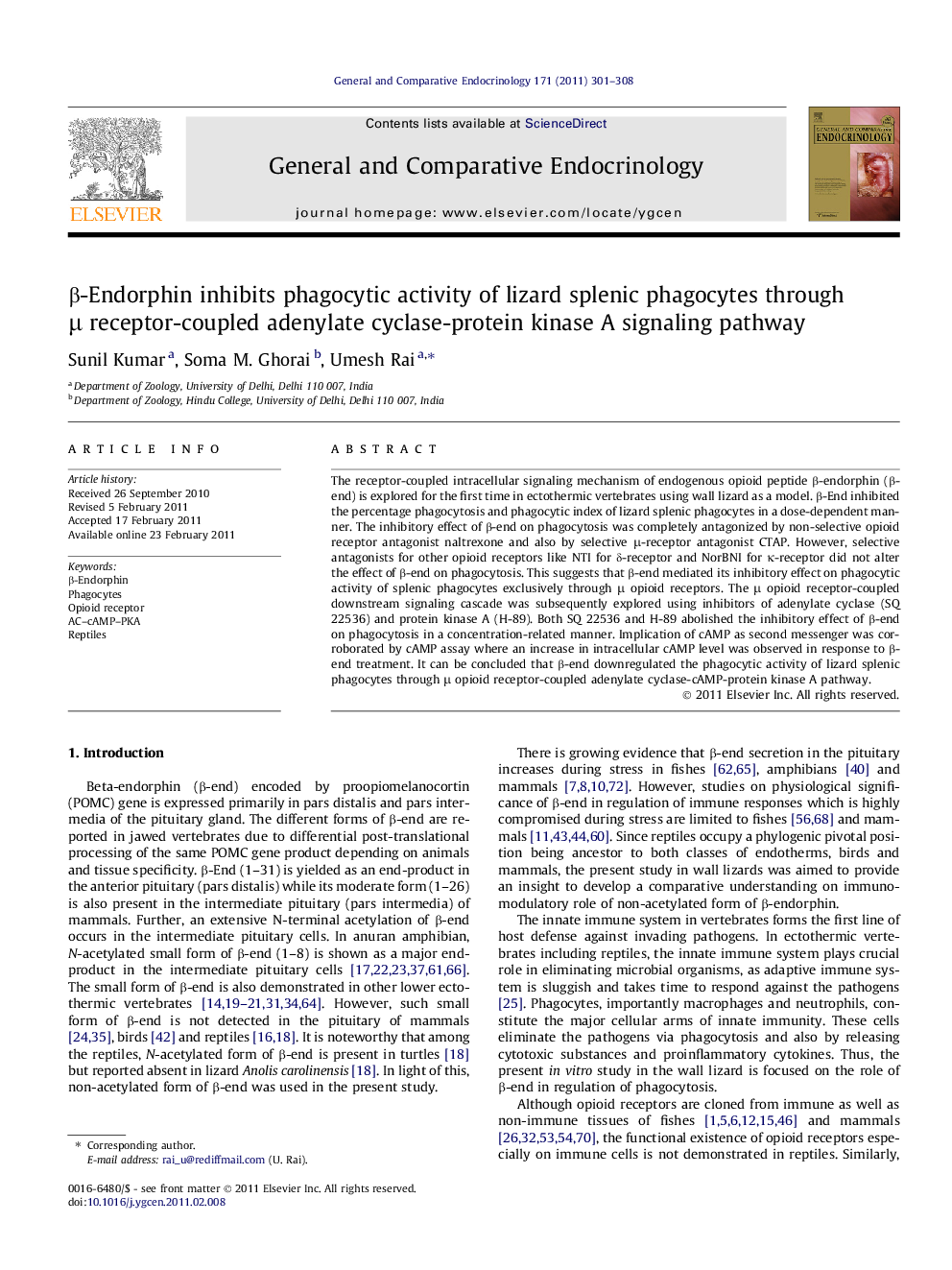| Article ID | Journal | Published Year | Pages | File Type |
|---|---|---|---|---|
| 2800914 | General and Comparative Endocrinology | 2011 | 8 Pages |
The receptor-coupled intracellular signaling mechanism of endogenous opioid peptide β-endorphin (β-end) is explored for the first time in ectothermic vertebrates using wall lizard as a model. β-End inhibited the percentage phagocytosis and phagocytic index of lizard splenic phagocytes in a dose-dependent manner. The inhibitory effect of β-end on phagocytosis was completely antagonized by non-selective opioid receptor antagonist naltrexone and also by selective μ-receptor antagonist CTAP. However, selective antagonists for other opioid receptors like NTI for δ-receptor and NorBNI for κ-receptor did not alter the effect of β-end on phagocytosis. This suggests that β-end mediated its inhibitory effect on phagocytic activity of splenic phagocytes exclusively through μ opioid receptors. The μ opioid receptor-coupled downstream signaling cascade was subsequently explored using inhibitors of adenylate cyclase (SQ 22536) and protein kinase A (H-89). Both SQ 22536 and H-89 abolished the inhibitory effect of β-end on phagocytosis in a concentration-related manner. Implication of cAMP as second messenger was corroborated by cAMP assay where an increase in intracellular cAMP level was observed in response to β-end treatment. It can be concluded that β-end downregulated the phagocytic activity of lizard splenic phagocytes through μ opioid receptor-coupled adenylate cyclase-cAMP-protein kinase A pathway.
Research highlights► β-Endorphin downregulated the phagocytic activity of lizard splenic phagocytes. ► The effect of β-endorphin was mediated through μ opioid receptors. ► μ Receptor-coupled AC–cAMP–PKA pathway involved in controlling phagocytosis.
